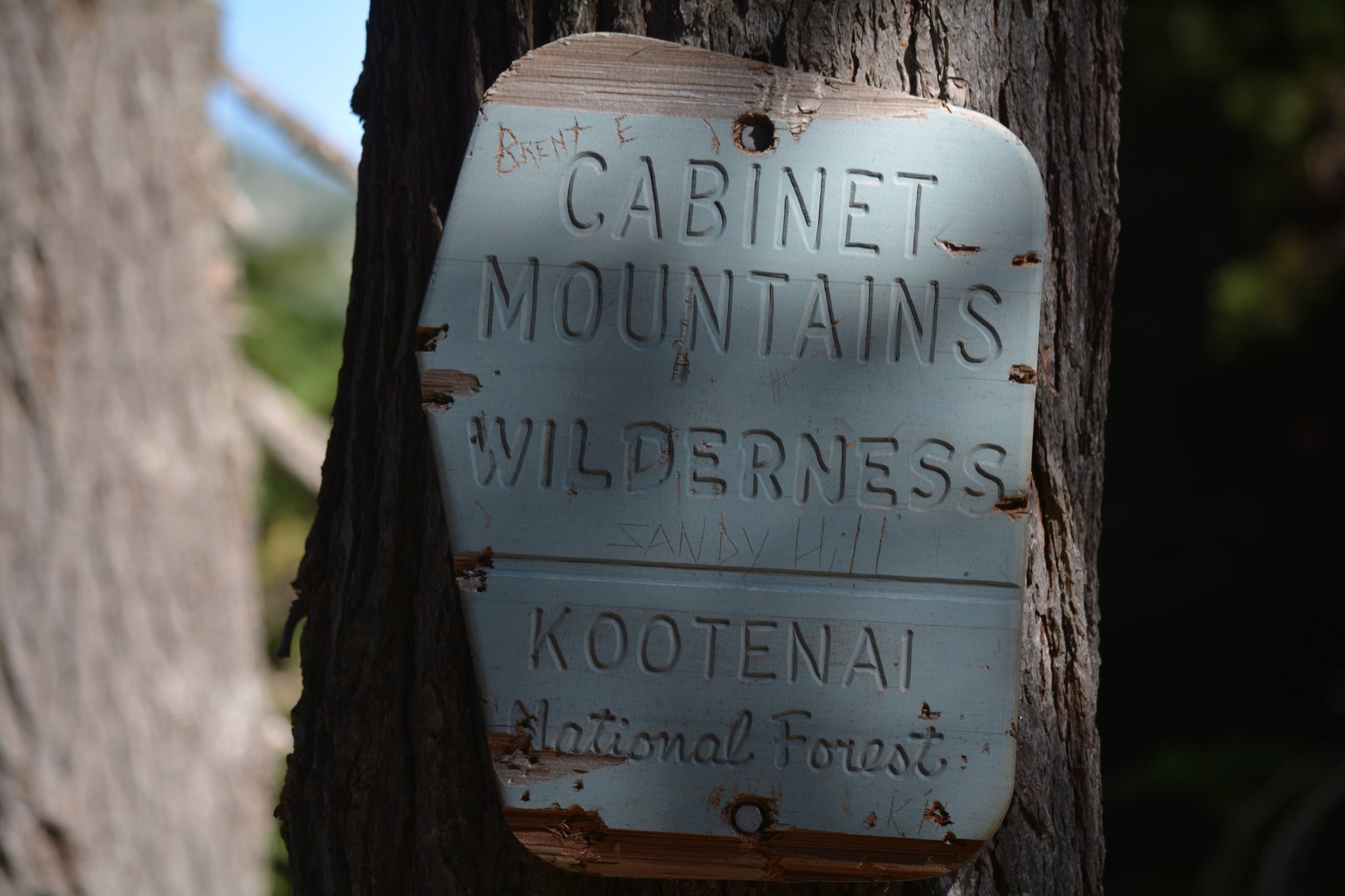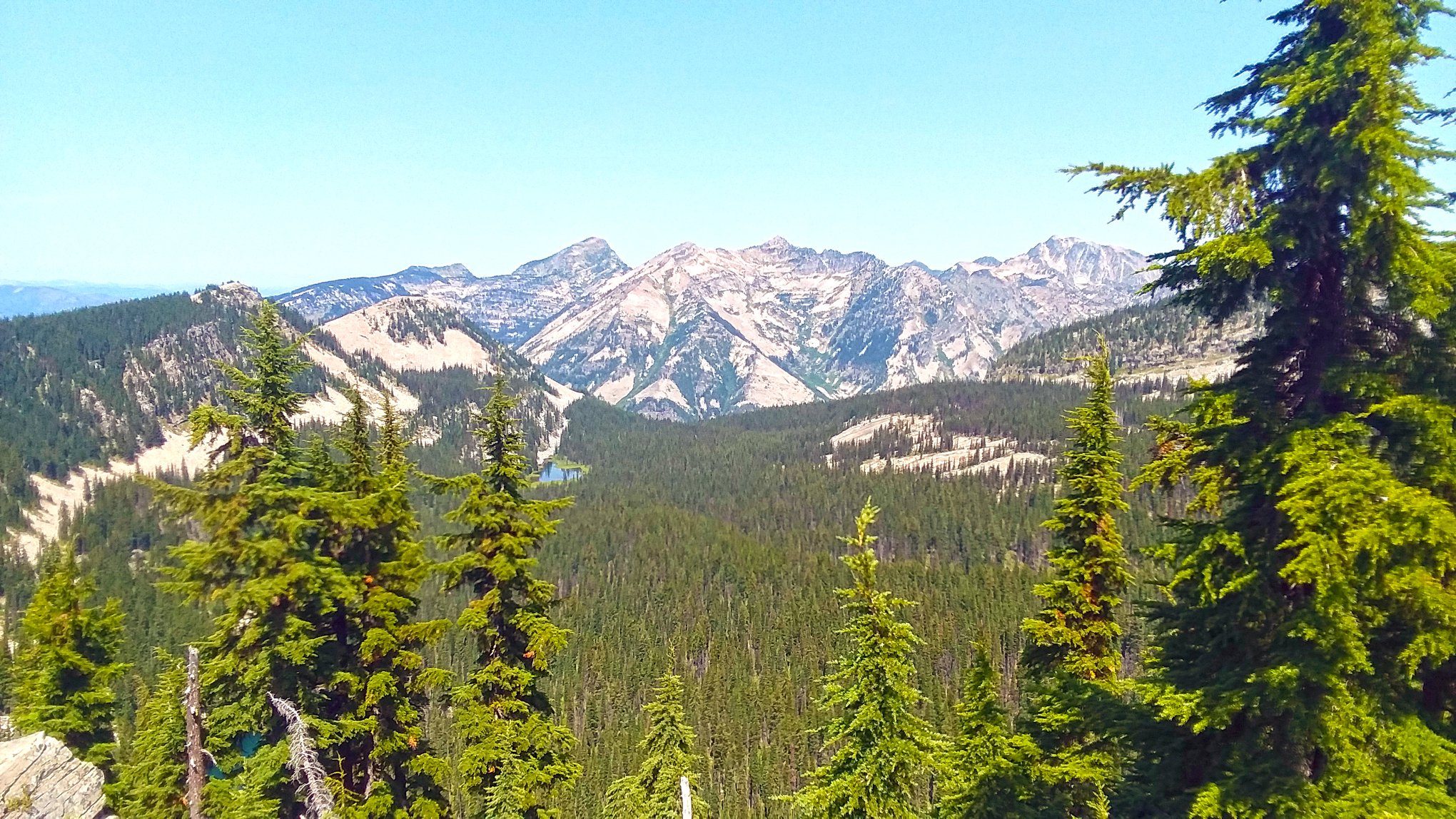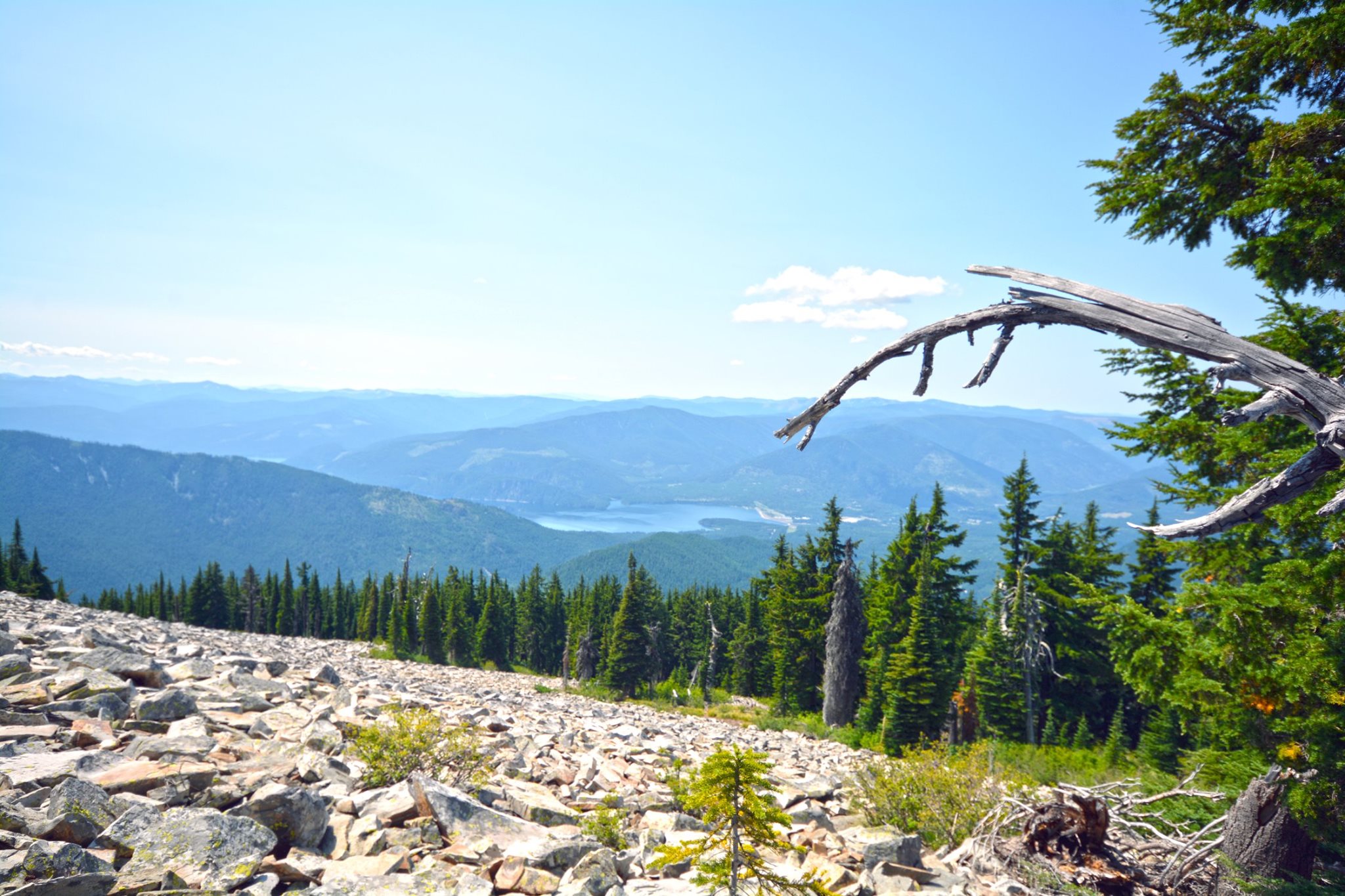Day One
Dave's book said the trail gains 1500 feet in the first mile and a half. And there is no water all the way from the trailhead to the lake. It was only about a four-mile hike but the book warned it would take three to four hours. After a long drive to the trailhead we finally started hiking late in the afternoon. It was probably about 85 degrees when we set out.
At the trailhead, as I was still fiddling with my gear, and my attitude, Dave said he would go ahead of me because I'm faster than he is going uphill, and I'd catch up to him. Then he was gone. I felt my apprehension increase as I was suddenly alone.
I had gone on day hikes each of the preceding two days, and other than that I hadn't been hiking much at all this summer, let alone hiking with a full two-night pack. There is no water on the trail so I had packed more than enough, and I could feel the extra liters as I hoisted the pack onto my back. I cussed a little beneath my breath as I cinched up my waist belt, took a last look around the vehicle, and hit the trail.
The book hadn't lied: The initial climb was relentless. And the forest was featureless, except for the constant uphill slope and the rocks and the dust.
It was so hot I might not have made it to the top of the ridge without my secret weapon for hiking in hot weather: I had halfway filled my pack's water bladder the night before and put it in the freezer, then I filled the rest of it with water in the morning. On the trail, every time I thought I couldn't go on, I stopped and took a long pull of ice water. It literally enabled me to keep going.
As I finally emerged from the woods at the top of the ridge I was greeted by an old friend: a Forest Service sign telling me I was entering the Cabinet Mountains Wilderness. Stopping there to catch my breath, I joyfully recalled many memories of past entries into this wilderness so near where I grew up, one of the 54 original wilderness areas created by the 1964 Wilderness Act. Today there are 765 federally designated wilderness areas in the United States.
An old friend. (photo by Dave)
continue, next column ▶
x
My mood improved a bit as the trail leveled and I could see the lake basin on the other side of the ridge. Beyond the basin was a spectacular wall of mountains with names emblematic of the southern Cabinets: St. Paul, Rock, Elephant, and Ojibway Peaks.
Beyond the basin was a spectacular wall of mountains. (photo by Dave)
It seemed I had put the hard part of the hike behind me and it would be a lot easier from there, but soon after that the ridge gained elevation and the trail followed steeply uphill. That's where I caught up with Dave, who was doing fine, but going slowly. Maybe it's a mental trick I haven't mastered, but I can't hike slowly. The weight of the pack makes me feel like I need to hurry and get it off my back.
So I passed Dave, but I soon was heading downhill again, away from the ridgetop, and away from the lake basin. The trail offered no visible explanation as it continued steeply downward. Watching the ridgetop recede toward the sky, I began to lose my temper, along with the precious elevation I had so painfully gained.
I yelled at the top of my lungs: "DAVE! WHY ARE WE GOING DOWNHILL?" Other than Dave, there was no one to hear me, and Dave couldn't answer the question. It was maddening. I cussed at whoever had built the damned trail.
Finally, after more cussing, and climbing, and rock hopping, we reached the ridgetop, again. Then we headed steeply downhill to the lake, over another big talus slide (wear sturdy boots on this hike), and through a slowly recovering burn area of sparse trees and underbrush.

























